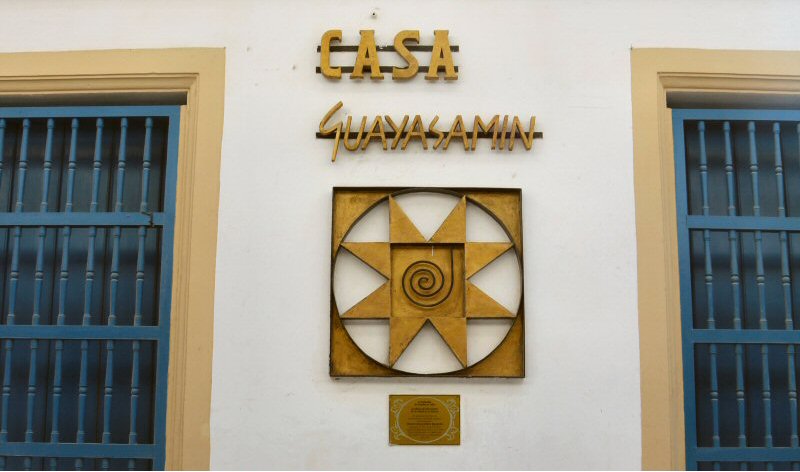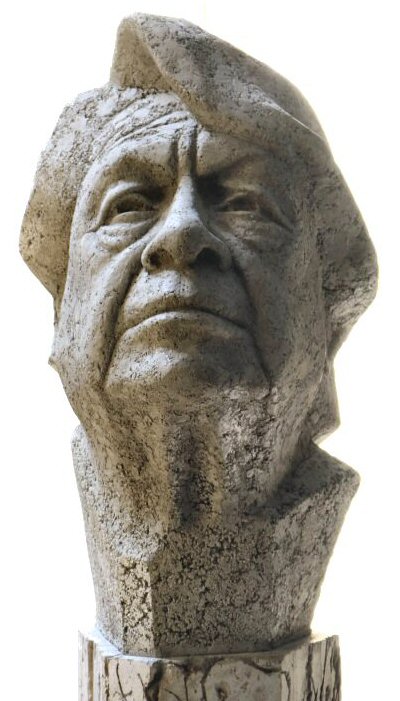
HISTORY
The colonial building dates back to 1744. It
was used as mansion by its owner
María Gertrudis Alberro
Peñalver. Major transformations were made in the building,
when it became the property of Don José
María Chacón, the Lieutenent in the Royal Navy, in 1792. He
realized an important change at the facade, ceilings, and
walls, adding a watchtower to the building. When he sold it to
the merchant Mariano Carbó
in 1796, the splendid house was approximately similar to the
current view. In 1832 the building was sold to Marquesa de Santa
Alalla. In 1980s some shops were occupying the ground floor,
whereas six families were living in a small space on the upper
floor. After a thorough restoration process, the building was
inaugurated in honor to the Ecuadorean painter Oswaldo
Guayasamín (1919-1999) as Casa Oswaldo Guayasamín in 1992. Fidel
Castro’s close friend Oswaldo Guayasamín that had great
contribution in the restoration of the building, was present at
the opening ceremony.
Oswaldo Guayasamín used this house as a
studio in the last six years of his life. It is said that in
this period, he never spent the night in the house, preferring
to share his time with his close friends instead of submerging
in the solitude that reigned in the property. When he died in
1999 at the age of 80, the house was converted into a museum.
The two-storey building has a
rectangular shape. The black color of the wide gate and the
balcony at the upper floor, extending along the facade, together
with the blue color of the windows are in contrast with the
pastel color of the facade, but it gives a clean look to the
building. At the right side of the entrance a plaque is nailed
on the wall, containing a sentence of the painter: “mantengan
encendida una luz, que siempre voy a volver (keep a light on
that, I will always return)”. At the entree a large black and
white photograph of the painter, taken in front of his paintings
in his studio, welcomes the visitors. Just at its side you will
read another sentence of the painter: “no creo en fronteras, ni
in rezas, creo en la humanidad (I do not believe in borders, nor
in prayers, I believe in humanity)”.
The wooden sculpture of Rumiñahui is
accompanied by the flags of Cuba and Ecuador. Rumiñahui is an
Incan hero that fought against the invasion of the Spanish in
Quito in the 16th century. He was introverted, severe, strong,
agile and authoritarian, and because of his appearance he was
given the name Rumiñahui that meant Stone Eye in Quechua
language. His eyes were infusing hardness and a relentless
character. It is the work of Oswaldo Guayasamín. It stands on a
wooden pedestal, and a sentence of the painter is written on a
plaque: “a fidel con admiración de
Guayasamín (to fidelity with
admiration of Guayasamín)”.
The central courtyard occupies rather a
large area, enriched by the paintings of the artist and some
sculptures, including the big bust of Guayasamín. There is an
open classroom for the grammar school children at the back of
the courtyard.
The Casa Oswaldo Guayasamín is located
on the Obrapia street #111, between the Mercaderes and the
Officios streets.

